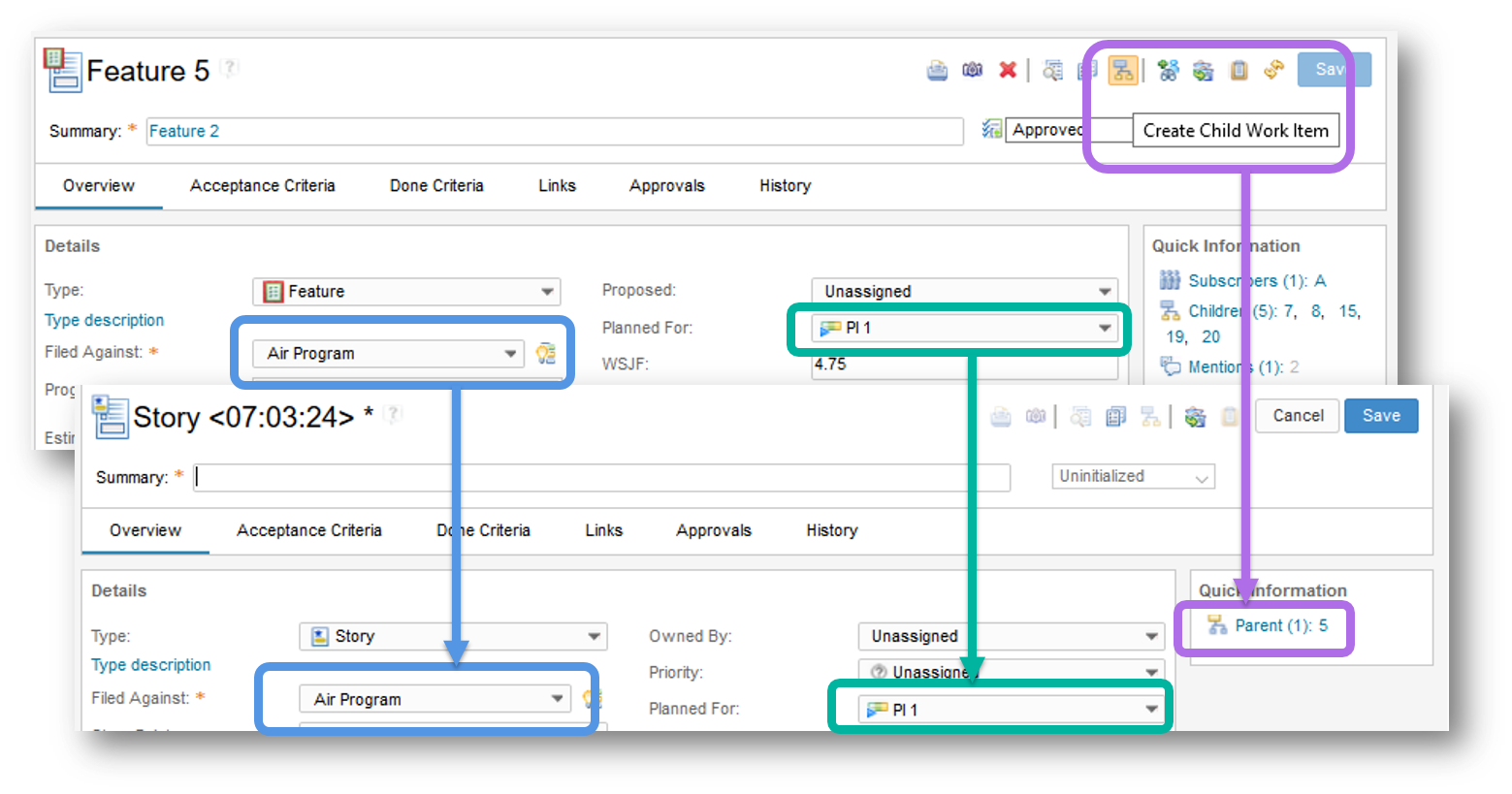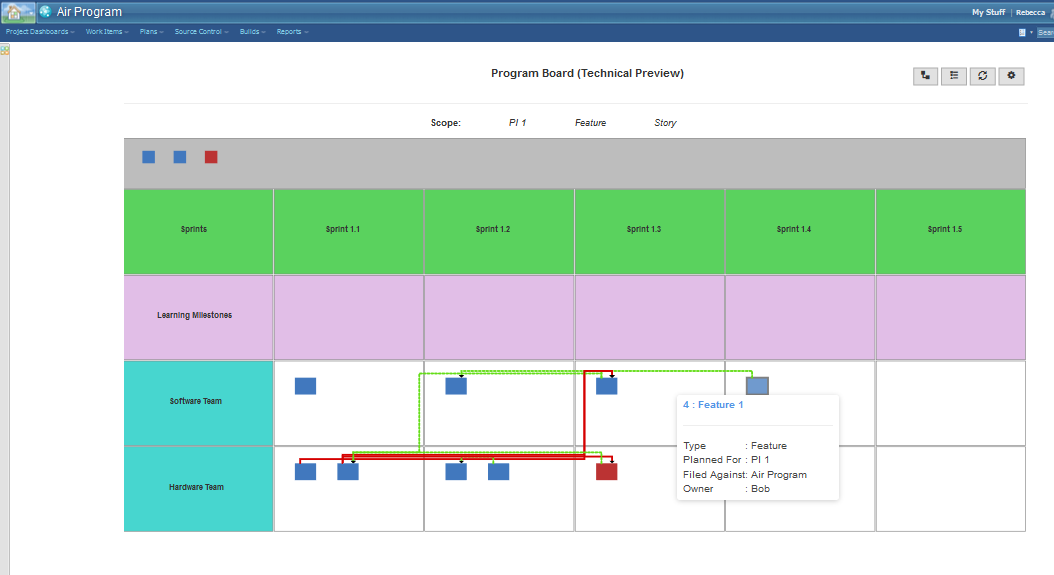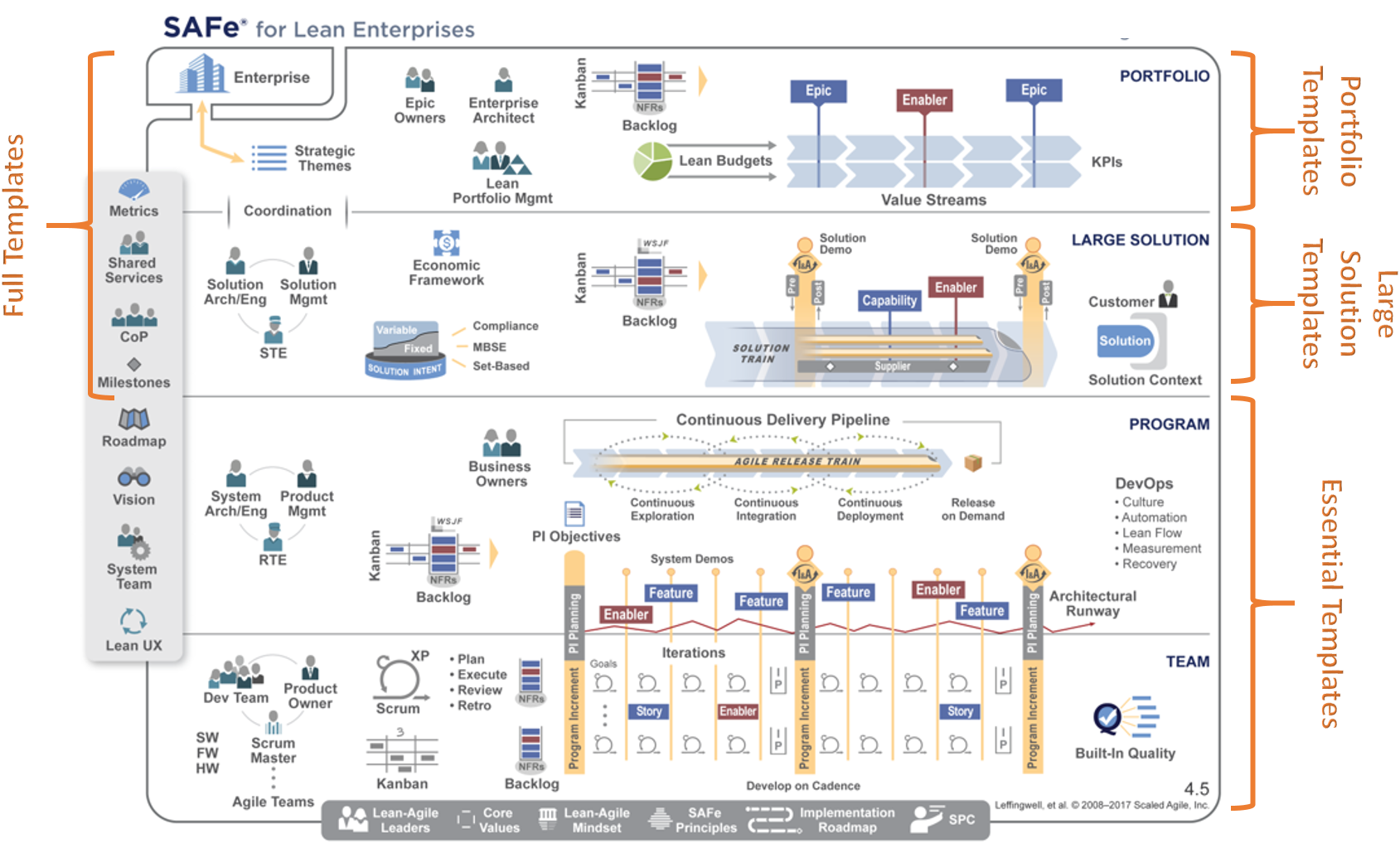The benefits of “lean” are taking shape. More organizations than ever before have shifted from simply pursuing an interest to actually doing something about it. And in this world of growing systems and software complexity, the need to effectively and efficiently coordinate the delivery of value across distributed teams is no longer a choice… it’s a necessity.
Transforming an enterprise involves three aspects:
- People: You need to establish an organization-wide culture with the right set of skills to embrace lean and agile values – everywhere, across all teams, every day.
- Process: Apply lean and agile principles in the planning, development, deployment and delivery of value and the monitor feedback to improve, continuously.
- Tools: Provide a framework that enables the implementation of lean and agile practices – easily – while also providing traceability and visibility of wok across multi-disciplinary teams.
People
It is no longer enough to have efficient and effective agile teams. The entire organization needs to embrace lean and agile values. Why? Because if the business does not change the way the make decisions about strategy and initiatives to drive business value, it doesn’t make any significant difference how well teams deliver. The cultural transformation to “lean” encompasses everyone – not just engineers, but also architects, systems, requirements and software engineers, business analysts – all marching toward a unified vision to deliver value.
These cross-disciplinary teams require the skilled resources from both business and engineering to be fully independent and self-governing, making localized decisions to speed time to value. That’s what agile teams look like, but now we need to go bigger.
Process
As organizations attempt to become efficient and effective as a whole, they likely are considering applying an enterprise-wide process. The choice here is basically “build vs buy”. While there is no one-size-fits-all method for scaling agile, there is an industry-standard framework that is getting a lot of attention: the Scaled Agile Framework® (SAFe®). This is a great starting point with a proven track record of success in helping organizations drive lean transformations. You don’t have to make this stuff up. Instead, start with SAFe and make it your own. Take the parts that bring your organization value, and evolve it as you go, .
Tools
Okay, by now you’re wondering what tools support cultural transformations? The short answer is none, at least not exactly. But tools that support modern methods help with culture. Enter the IBM Continuous Engineering (CE) and IBM Rational Collaborative Lifecycle Mangement (CLM) solutions – tooling that supports all roles, all disciplines, and the need to define solutions comprising artifacts across those domains – in a truly integrated and collaborative way. In a nutshell, the CE/CLM solutions support the new lean enterprise. And with a modern method – SAFe – embedded directly in the change, requirements and quality management tooling, we can help you get up and running quickly and start driving that cultural transformation too!
Ready for a few details?
The “big” news
In 6.0.5, we supported the latest version of SAFe via a set of beta templates as described in What’s new? Enhanced Support for Lean Enterprise Transformations in CLM 6.0.5. Now the “big” news is that the production-level templates in CE/CLM 6.0.6 include features that truly enhance your scaled agile experience.
Quick and easy child work breakdown
Such a simple change but such a dramatic improvement in your user experience! Work breakdown is the activity we do over and over and over again. Me too, so I understand. And if it takes effort, it becomes a tedious, grinding chore. In IBM Rational Team Concert (RTC) 6.0.6, we’ve improved this activity with three critical enhancements:
- Quick Create Button: The work item editor contains a new button for creating children. Click that button and your child work item is created – yes, with one click! Paired with the next two features, this is golden.
- Default Child Work Item Type Configuration: Now, an administrator can specify which work item type is the designated default child for a parent work item type. So, when you click that Quick Create Button, viola! The default work item type is used to create the child.
- Inherited Attributes: The critical attributes of the parent, Filed Against and Planned For, are now automatically inherited when you create a child work item type.
To recap:
Click a button, a child work item of the default type with Filed Against and Planned For attributes from the parent is created. Exciting, I know! Note that the button is only supported in the work item editor in 6.0.6, but support in plan views is on the horizon.
Program Board
Another exciting new feature, as big as Quick Planner in my humble opinion, is the Program Board. This is delivered as a technical preview in 6.0.6 because we really want you to try this out and give us some feedback before it goes live.
For those of you unfamiliar with SAFe, the Program Board is quite simply a visual way to manage dependencies. Does that mean that the Program Board is only for those who use the available SAFe template? No, you do not need to be using the SAFe templates to take advantage of this. If you have a team-of-teams organizational structure, this is the feature you would use to visually manage the dependencies across those teams. It relies on some very basic RTC constructs that are not SAFe-specific:
- Parent-Child relationship with a Parent assigned to an iteration at the team-of-teams level and a Child assigned to a sub-iteration at the team level
- Depends On – Blocks relationship between Child work items
- Timeline with an iteration and sub-iterations that include dates
That’s it! Simple Simon. Please try it out and give us feedback ASAP!
New and improved reports
In a separate blog, I describe the new and improved reports delivered in CE/CLM 6.0.6 to support scaled agile environments so I won’t go into detail here. You can read all about it in Import new & improved CE reports for your scaled agile environment!
SAFe 4.5 support recap
Briefly, a recap of the SAFe 4.5 support… We deliver a set of four templates for each of the SAFe configurations in Rational Team Concert (RTC), Rational DOORS Next Generation (RDNG), and Rational Quality Manager (RQM), supporting:
- Programs & Teams: Use the Essential SAFe templates to establish one or more project areas for this level
- Portfolio: Use the Full SAFe, Portfolio SAFe, or Large Solution SAFe templates to establish a Portfolio-level project area that orchestrates delivery across multiple Programs. Your choice here depends on whether or not you want to elaborate Large Solutions – which I highly recommend!
The Portfolio, Full or Large Solution template should be used to create a portfolio-level project area(s) related to multiple Program level project areas created using the Essential template. That is, a Portfolio has multiple Programs like this:
The templates are completely independent of each other so you can start slowly and evolve as your needs and maturity grow. The image below describes the most typical evolution I see:
As always, I love to get your feedback on anything you’ve read here. Happy to help you get started or point you in the right direction. And please visit our SAFe landing page on jazz.net for all things “SAFe”! Don’t forget, we are here for you, so don’t hesitate to reach out.
The IBM SAFe Team (safeinfo@wwpdl.vnet.ibm.com)
Ask questions on the Jazz.net forum. Stay connected with Jazz.net on Facebook and Twitter. Watch us on YouTube.













































































































































































